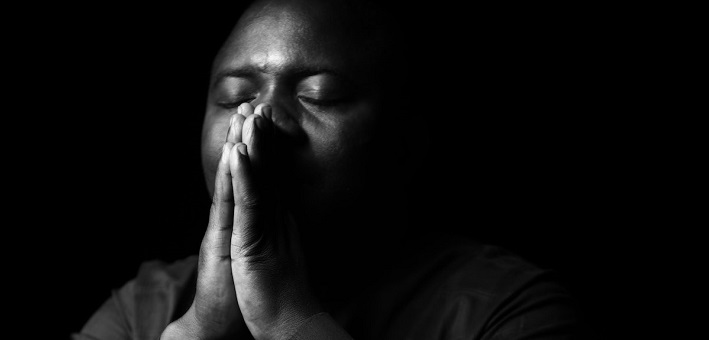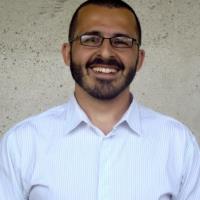Commentary on Mark 10:46-52
The healing of Bartimaeus, son of Timaeus, belongs to the genre of healing miracles. Literary-wise, healing narratives follow a rhetorical and formulaic pattern whereby a presentation of the character’s predicament precedes Jesus’ actions and words, generally aimed at transforming a disabled body into an abled one. Such passages conclude with a brief remark about the nature of discipleship and a proclamation made by the healed character about Jesus’ power and divinity. Of course, every healing narrative also includes variations on such a formula, coloring a particular pericope with new insights into the characters of the healer and the healed.
In this case, Jesus is leaving Jericho, and a group of people accompanies him (10:46). “Being on the road” serves as a literary motif to introduce Bartimaeus, a blind man who sits on the sideway. The description of such a character is straightforward: unable to see and begging for money, Bartimaeus represents the poorest among the poor.
Although the narrative does not offer more details, the reader realizes that he is a liminal character: outside of the city, outside of the path, outside of the light, and outside of the economy, Bartimaeus, like many beneficiaries of Jesus’ healing, embodies the effects of social exclusion. We should also keep in mind that such a position most likely kept Bartimaeus from having a household. Although he is the “son of,” men in his situation would not be able to form a family, work to sustain himself and his dependents, or fulfill some obligations proper to civic and religious life.
The narrative builds some tension using the crowd as an obstacle of communication between Jesus the healer and Bartimaeus the healed. Although the multitude charges the man to be quiet, such an injunction only causes the blind man to renew his proclamation of Jesus as the son of David (10:47-48). Bartimaeus, then, confesses his faith in Jesus before the healing. Jesus’ final words (10:52) function as an approval of the blind man’s confession.
Compared with a previous healing of a blind man (8:22-26), this scene shows remarkable differences (8:22-26). The blind man from Bethsaida, in a considerably shorter passage, is brought to Jesus. In this case, it is the multitude that intercedes on behalf of the blind man. The healing takes place in two stages: first, Jesus takes saliva from his mouth and puts it on the blind man’s eyes, provoking him to see as if in shadows. Immediately afterward, Jesus proceeds to touch him again, and this time the healing comes to complete success. The episode ends with Jesus sending the healed man back to his home and asking him not to go into town.
The differences between both healings are essential: not only do they differ in who takes the initiative or the role of the crowd, but the first episode also has a haptic component (touching becomes an essential part of the healing), while in the second, the word becomes the medicine itself. Furthermore, in this passage, Jesus asks the beggar about his needs, while in the first one, there is no dialogue about the blind man’s wishes. There is no Christological confession in the first one, whereas Bartimaeus confesses Jesus as the son of David from the start.
In the case of Bartimaeus, we encounter a seemingly insignificant detail that colors the theology of discipleship so prominent in Mark 10. In my commentary to the previous passage (Mark 10:17-31), I suggested that the wealthy man could not become a proper disciple considering Jesus’ commendation that he sold all his belongings. I also suggested that Jesus’ response also implied that the sale of all the belongings probably included slaves and that such action would benefit those on the lower scale of the social strata. Bartimaeus belongs precisely to this group. Subsequently, this passage provides a contrast to the failed discipleship encounter of Jesus and the wealthy man. Such contrast I see pictured in the narrative detail that informs us that Bartimaeus leaves behind the only valued item he owns: “and he, casting away his coat, got up quickly and abruptly jumped towards Jesus” (10:50)
The cloak here is not only an aesthetic garment. For individuals living below poverty levels, the cloak is a piece that provides warmth in hostile weather conditions, a valuable piece that would allow them to sleep at night or to throw it in front of them to collect money. The garment is also a sign of status and power.
Although the pericope portrays Bartimaeus as belonging to the lowest echelons of social strata, the garment represents the little power he owns. Jesus’ cloak plays a crucial role in the healing of the woman with the flow of blood (5:27-30). In another passage describing Jesus’ power to heal, Mark summarizes: “wherever he went, into small towns, or great towns, or into the country, they took those who were ill into the market-places, requesting him that they put their hands even on the edge of his robe: and all of those who did so were made well” (6:56). When Jesus walks in Jerusalem, the crowd lays down their cloaks as a welcoming sign (11:8). The partition of Jesus’ cloak in the final episode of the crucifixion culminates the process of torture he has been subjected to (15:24). The cloak plays different functions (source of power, divestment of power, humiliation, reverence, etc.). Still, they all share an understanding of the cloak as a sign of status.
In a section of the gospel particularly invested in suggesting modes of discipleship, Bartimaeus appears as a radical disciple that cast away his only valuable belonging. The passage ends with a compelling description of Christian discipleship built on wordplay. Whereas the miracle starts with Bartimaeus “sitting on the side of the road” (10:46), it ends with the new disciple “walking, following Jesus on the road” (10:52). This interpretative move is crucial because it provides contemporary readers a focal point beyond the healing, allowing us to steer away from ableist interpretations (admittedly present in the text) that reinforce theologies that equate faith and healing. In other words, I suggest that contemporary interpretations should focus on the blind man’s disposition rather than on the blind man’s condition.


October 24, 2021